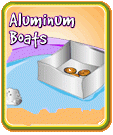
Contributed By: Reuben H. Fleet Science Center
Share This Experiment
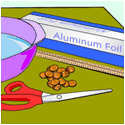
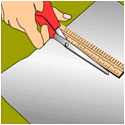
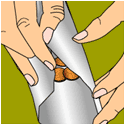

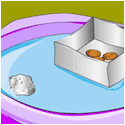
Experiment Category:
Objective:
Test the buoyancy of an aluminum foil boat and an aluminum foil ball.
What You Need:
- Small bucket or large bowl
- Water
- 20 coins of the same weight (e.g. pennies, 2p pieces, etc.)
- Scissors
- Aluminum foil
- Ruler
To Do and Observe:
1. Fill the bucket with water.
2. Using the ruler to make measurements, cut two 15-cm (6-inch) squares from the aluminum foil.
3. Wrap one of the squares around 10 pennies and squeeze the foil into a tight ball.
4. Fold the four edges of the second square up to make a small boat.
5. Place 10 pennies in the boat.
6. Make sure you seal each corner tightly so water cannot leak into the sides from below the boat. Set the boat on the surface of the water in the bucket.
7. Place the ball on the surface of the water.
What's Going On:
When you dropped the ball of aluminum foil in the water, it had a completely different result than the boat. Although both pieces of aluminum foil have the same weight, the ball takes up a smaller space than the boat. The amount of water pushed aside by an object equals the force of water pushing upward on the object. The larger boat pushes more water out of the way than the ball and creates enough upward force to cause it to float.
Parent/Teacher Tips:
Measure and cut out two more pieces of aluminum foil. Take one sheet of aluminum foil and design a boat that has a different shape than your original. Make a third boat using the other piece of aluminum foil. You can try making a circle, square or rectangle shaped boat. Also try one making one with high side barriers and one with low side barriers. Now see which boat can hold the most pennies without sinking. You should see a distinct difference in the amount of pennies each boat can hold before sinking. If you see a mistake in your ship that can be corrected to make it more buoyant, simply take it out of the water, fold it flat, dry it off and make it again. You should be able to use the aluminum foil over and over if you dry it off and handle it with care. You can also try using heavier objects on your boat.

Comments
Nice